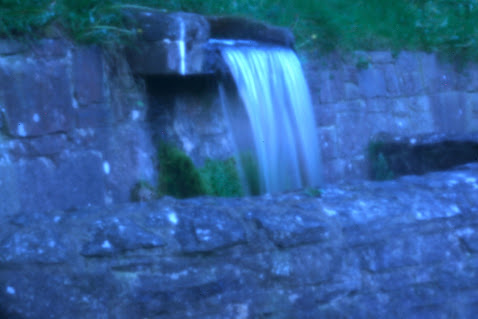OK, confession time.
I have developed an (un)healthy obsession with pinhole photography.
What started out as an experiment in "something different" has now turned into a full blown obsession.
I have always been a bit of a tinkerer, and this journey is really engrossing me. Unusually, I got the order the wrong way round, starting out on the digital side of pinhole photography and now working my way back to the more traditional way of doing it.
The photo above is of the Dodder Waterfall in Tallaght, in Dublin. This is probably my 10th attempt at making a perfect pinhole. Definitely getting better at it, but not quite there yet.
In desperation, I have now succumbed and ordered pinholes from this lad. Unfortunately he is on vacation at the moment, so there I am, waiting.
No worries.
In the meantime, I have dipped my toes gently into the trap that is analogue photography.
I am hooked.
I have previously written my Ode to the instamatic camera and it's 4 x 4 prints. I can now, with confidence, say that it was due to the 126 film, that this square format was the flavor of the month. Shortly after writing that, I wondered what it would be like to take a similar type of photograph in this day and age. Enter the 35mm point and shoot. A Ricoh I bought on ebay. I tested it on a trip to the beautiful Glendalough and then took it with me to Bohernabreena Reservoirs. Instant addiction!!
There is nothing with as much soul as a proper film photograph. Pity that processing and printing has become so costly. In my ignorance I purchased an Illford HP5+ film to test the camera, only later to find out that the developing cost for this film is higher as it cannot be developed locally by the lab!? Has to be sent away.
So I bought my own development kit from thephotohsop.ie, because that is the type of person I am.
Doubly hooked now.
There is nothing to compare with the feeling of developing your own film.
And then on to the digitizing of the film. Now if you look at the bottom of the photo above, you will see that the focus has gone a little south there. It could be the camera... the last 35mm film camera I owned back in 2002 did exactly that. Or it can be that the film is not held 100% flat when I scan it (a process that will be the subject of another post, to be sure).
So being the tinkerer that I am, I have now designed my own film holder, and will be designing a more manageable scanning process to get it all spot on. Watch this space.
I am however now firstly busy with building a pinhole camera. Yes building or, more accurately, printing. Will test drive it with photo positive paper and may then try film on it as well. Or negative paper. Oh the endless possibilities!!!
And that is my story for today. I have sooooo much I want to explore in film photography, that I find myself doing more than one thing at a time. Bad idea.
So, deep breath.
4x5 Pinhole Camera first....














